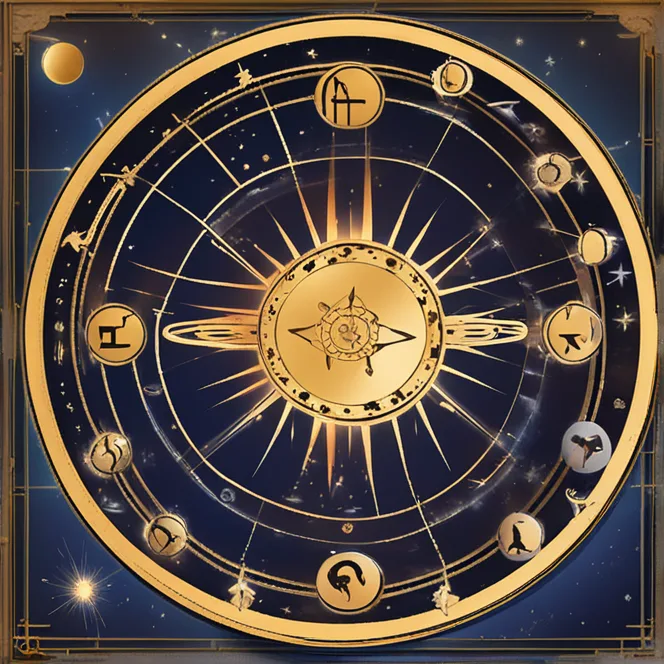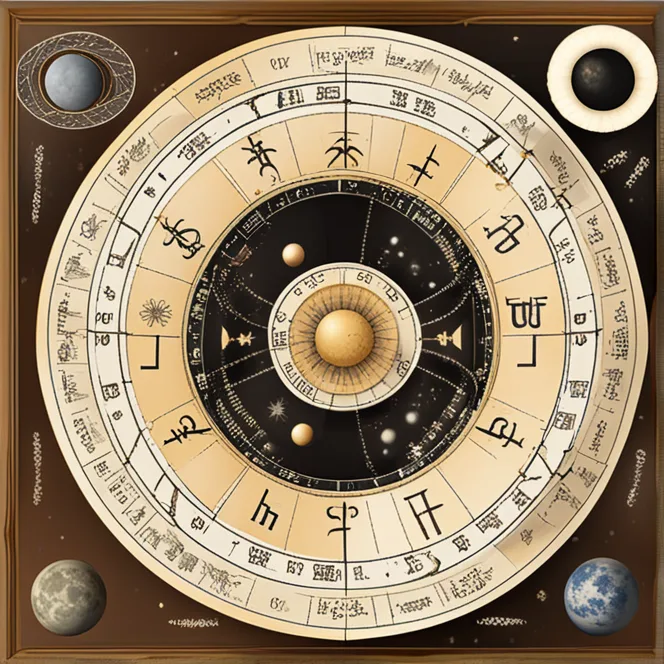
Astrology Aspects Secrets
Explore the fundamental building blocks of astrological interpretation with an in-depth look at astrology aspects.
article by Priya Deshmukh
Introduction to Astrology Aspects
Astrology offers a celestial map of the soul's journey, and one of the most significant components of this map is what astrologers call aspects. Aspects describe the angles planets form with each other on the zodiac wheel, shaping the flow of energies and coloring the dynamics of our lives. They are the conversations between the different parts of our psyche, represented by the planetary bodies, which can whisper, sing, or sometimes even shout at each other. Understanding aspects is crucial for deciphering the complexities of a birth chart, predicting future trends, and tuning into the cosmic rhythm of planetary movements.

The Major Aspects
In the realm of astrology, five major aspects are widely considered the backbone of chart interpretation: conjunctions, sextiles, squares, trines, and oppositions. Each carries its own signature energy. Conjunctions, occurring when planets are at the same place on the zodiac wheel, speak of blended energies and intensified focus. Sextiles, a harmonious 60-degree angle, offer opportunities and talents. Squares, with their challenging 90-degree angle, highlight tension and growth areas. Trines, a supportive 120-degree angle, flow with ease and potential, while oppositions, at 180 degrees across the wheel, encapsulate the theme of balance and confrontation. These aspects, each with their distinct melodies, help create the symphony of an individual's life.

Orbs and Aspect Importance
An aspect's 'orb' is the degree of deviation allowed from the exactness of the angle that still permits an effect. Tight orbs (usually considered 1–5 degrees) often mean the aspect's influence is stronger and more immediate. Wider orbs (up to 10 degrees for major aspects) symbolize a more diffuse but still relevant influence. Not all aspects are created equal—a conjunction between two powerful outer planets will generally have a more profound impact than a sextile between two personal planets. As such, astrologers prioritize aspects based on the planets involved, the exactness of the angle, and the overall pattern they form within the chart.

Understanding Minor Aspects
Beyond the well-known major aspects, a slew of minor aspects—like semi-squares, sesquiquadrates, and quincunxes—add nuance to chart interpretations. These aspects often require closer attention as they represent more subtle, or sometimes more complex, energies at play. For example, the quincunx, a 150-degree angle, suggests adjustments and shifting perspectives. While minor in name, these aspects can speak volumes about undercurrents and patterns that might otherwise go unnoticed in the narrative of a person's astrological psyche.

Aspects and Sign Quality
The zodiac signs in which planets are placed also modify how an aspect expresses. Cardinal signs tend to initiate action, mutable signs adapt and transition, while fixed signs seek stability. An aspect between planets in cardinal signs might spark new beginnings, whereas in fixed signs, it may indicate determined focus or stubborn resistance. The dance between the planets is thus also choreographed by the qualities of the signs they occupy, adding another layer of depth to astrological analysis.
Aspect Patterns in the Birth Chart
Some birth charts contain specific configurations of aspects that form distinctive shapes, such as T-squares, grand trines, or yods, also known as the 'Finger of God.' These patterns often point to a central theme in an individual's life journey, a recurring motif or life lesson that may unfold over different stages of their life. Recognizing these patterns allows astrologers to provide insights into a person’s character, challenges, and potential in a holistic manner.
Transits and Progressions
Astrology is not just about the static natal chart; it is a living, breathing discipline. As planets continue their celestial paths, they form transitory aspects with the positions they occupied at the moment of one's birth—a phenomenon known as transits. Additionally, progressed charts symbolize personal evolution and unfold over a lifetime, revealing internal shifts. Both tools serve as valuable techniques for astrologers, helping to anticipate timing for potential challenges and windows of opportunity, marking the ebb and flow of an individual’s cosmic tide.
Published: 12/13/2023
Modified: 12/13/2023
More predictions
Come back here soon to learn more about yourself and your future


Exploring The Unknown Through Tarot
Explore the art of tarot reading to gain insights into your past, present, and future, and how it can guide your life decisions.


The Essential Guide To Astrology Aspects
Uncover the core of astrology aspects and how they influence personal horoscopes and celestial interpretations in this insightful article.


The Mystique Of Astrology Reader
Explore the intriguing world of astrology readers and their ability to decipher the cosmic blueprint of our lives through celestial insights.